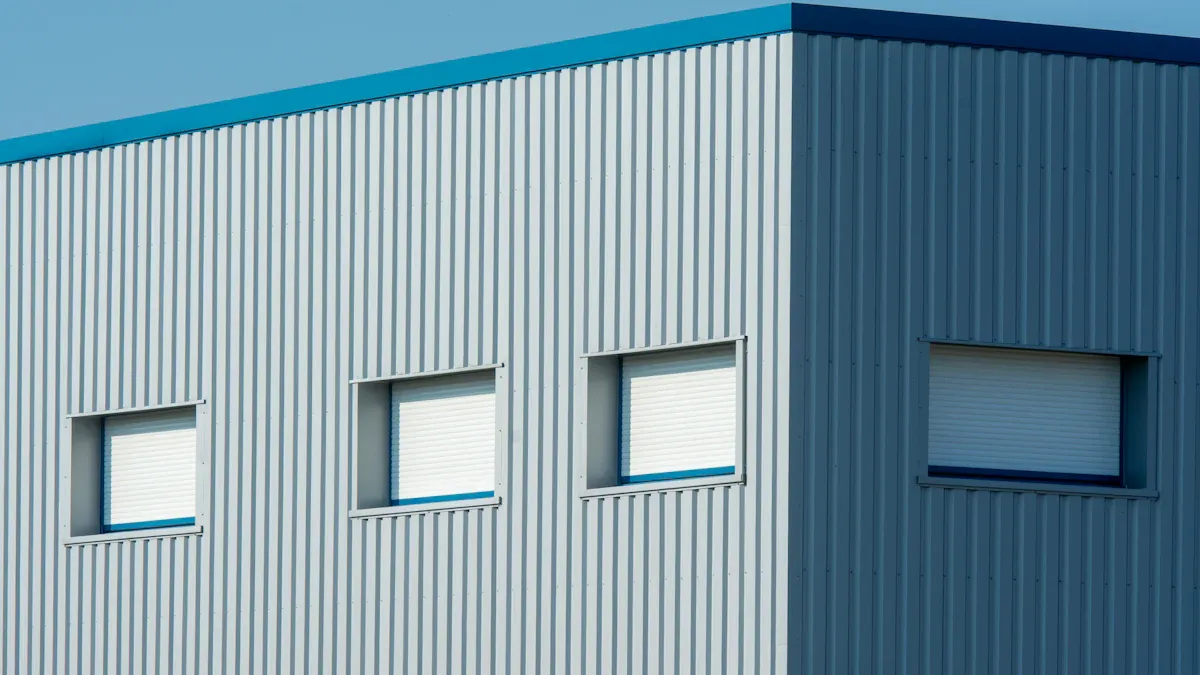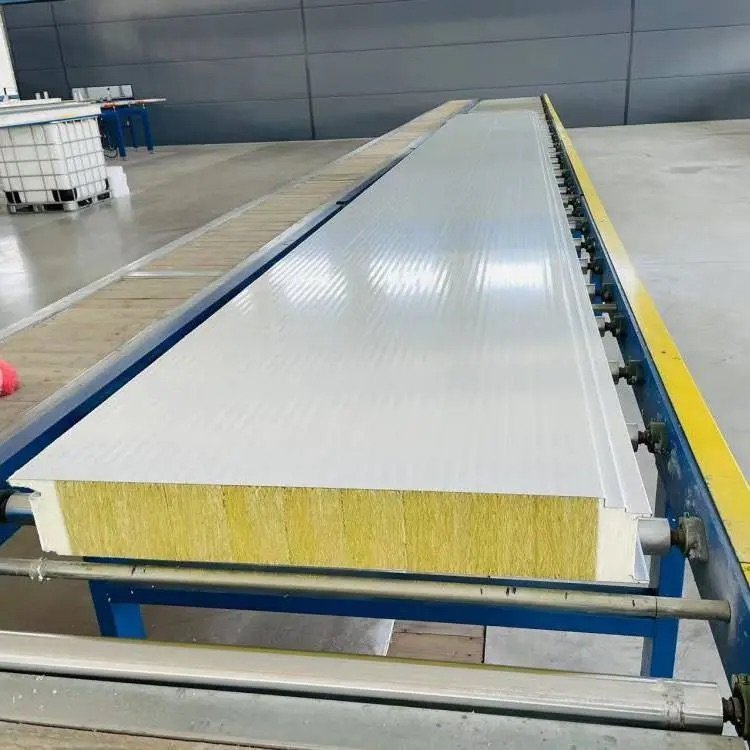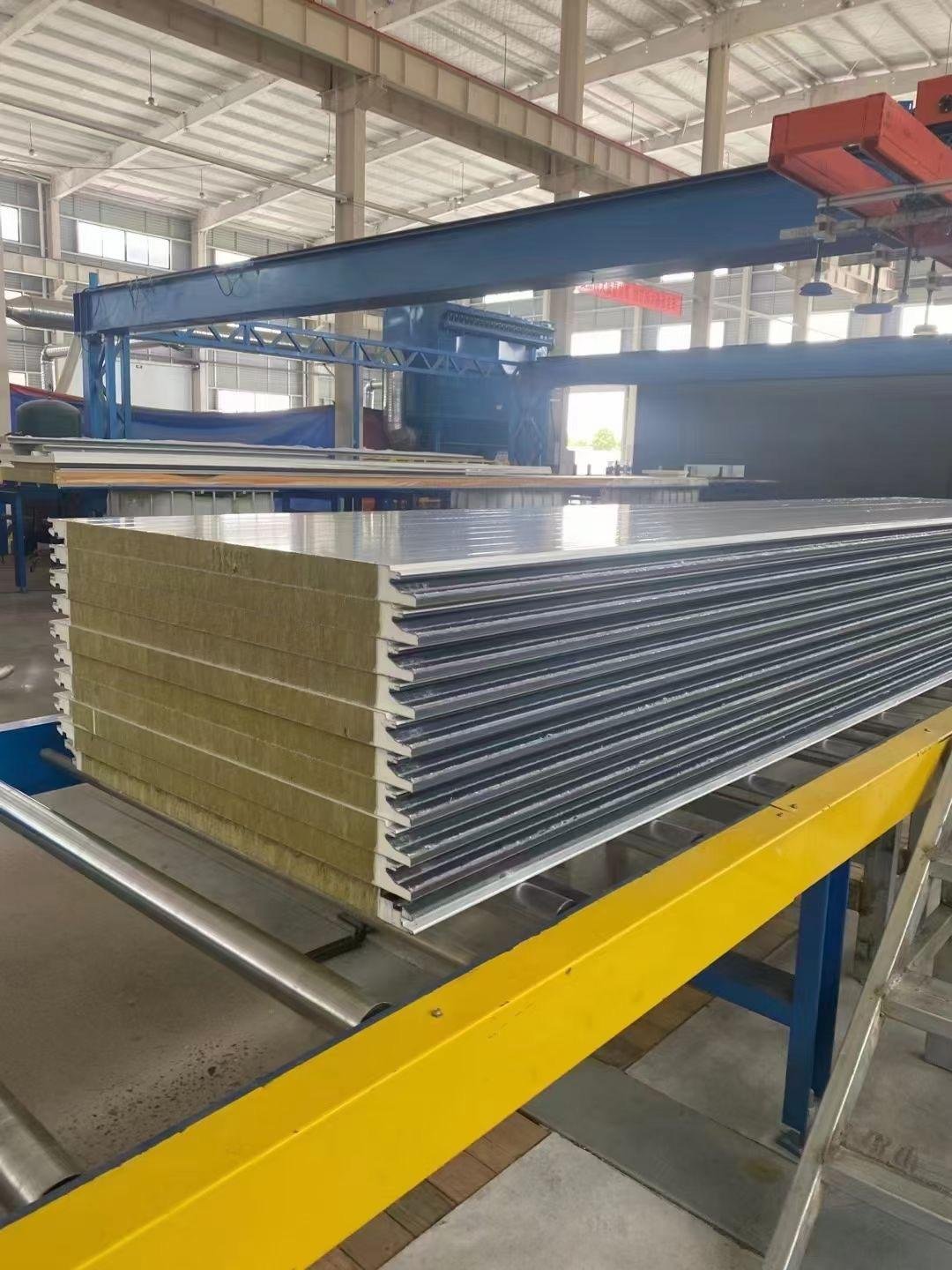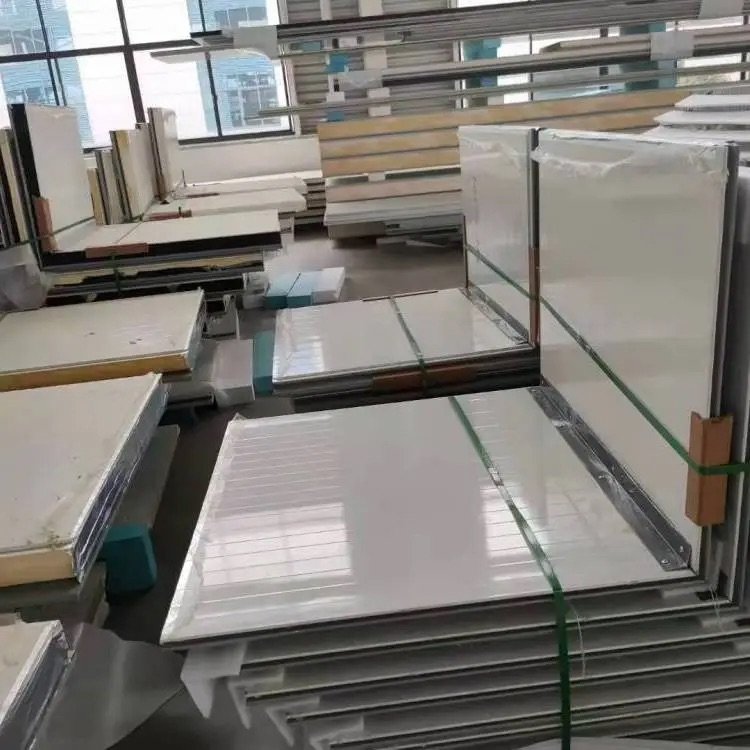
Sandwich panels are widely used in buildings due to their flexibility and ability to retain heat. However, it’s essential to consider the risks of sandwich panels, particularly regarding fire safety, as the internal materials can significantly impact this aspect. For instance, some panels have better heat resistance than others. Polyurethane, for example, boasts a low λ-value of 0.024 W/(m·K). This variation in material properties alters the risks of sandwich panels in fire situations. Therefore, selecting the appropriate material is crucial, especially in areas prone to fire hazards.
Key Takeaways
Pick sandwich panels with fireproof cores, like Rockwool, to reduce fire danger and improve safety.
Check and fix sandwich panels often to spot problems early and keep them safe during fires.
Learn about fire dangers of panel types; don’t use polyurethane or polystyrene in risky areas because they burn easily and release harmful smoke.
Types of sandwich panels and fire resistance problems

Rockwool panels and their fire resistance
Rockwool panels are great at resisting fire because of their mineral wool core. They can handle very high heat without losing much mass. For instance, tests show no melting even at over 1000°C. The table below shows how they perform under different conditions:
Temperature (°C) | Mass Loss (%) | Notes |
|---|---|---|
Up to 300 | 0% | Almost no mass loss |
Up to 500 | ~5% | Except for density of 32 kg/m³ |
Up to 800 | ~10% | Except for density of 32 kg/m³ |
Melting Point | >1000 | No melting seen up to 1000 °C |
These features make Rockwool panels a safer option in fire-prone areas. They stay strong during fires, lowering fire risks a lot.
Polyurethane (PU) panels and flammability concerns
Polyurethane panels are popular for keeping heat in but have fire risks. PU cores catch fire easily and release harmful gases when burning. Tests show they burn fast and change a lot when exposed to heat. Adding flame retardants like ammonium polyphosphate helps, but PU panels still need careful thought. Always check their fire behavior before using them, especially in risky places.
Expanded polystyrene (EPS) panels and fire hazards
EPS panels are cheap and light but have big fire safety issues. When heated, EPS cores melt and spread fire quickly. At over 250°C, they lose their structure due to delamination. They also give off toxic smoke, which is dangerous. If you use EPS panels, make sure they meet fire safety rules and add extra fireproofing if needed.
Comparing fire resistance across materials
The fire safety of sandwich panels depends on their core material. Rockwool panels are the best because they don’t melt easily and lose little mass. PU panels are good insulators but burn faster and release toxins. EPS panels are affordable but fail in fire resistance and stability. Studies show Rockwool panels with mineral wool cores are the safest. Choose these materials if fire safety is important.
Key risks of sandwich panels for fire safety

Flammability and rapid fire spread
Sandwich panels with flammable cores can catch fire fast. Materials like polyurethane or polystyrene burn quickly and spread flames. This makes it harder to control fires and protect people. Using non-flammable cores, like rock wool or glass fiber, helps a lot.
Panel Type | Core Material | |
|---|---|---|
Single-layered | Rock Wool | |
Double-layered | Glass Fiber | Up to 80% |
Choosing safer materials lowers fire risks and improves protection.
Toxic smoke and health risks
Burning sandwich panels release harmful gases that can hurt people. Polyurethane and polystyrene cores give off carbon monoxide (CO) and hydrogen cyanide (HCN). In tests, CO levels reached 3.75%, ten times the deadly limit. HCN also hit 150 ppm, which is lethal in 30 minutes. These gases make it hard to escape safely. Picking fire-resistant materials can reduce these dangers.
Structural integrity under fire conditions
Fire weakens sandwich panels, causing them to fail. Combustible cores can melt or break apart under heat. Tests show panels lose strength at half their load capacity. Special coatings can slow this, but risks stay high. In 1993, a factory fire caused foam panels to collapse, killing two firefighters. Using stronger materials can help panels stay intact during fires.
Real-world examples of fire incidents
Real-life fires show the dangers of unsafe sandwich panels. In the Sun Valley factory fire, foam cores made the fire worse. Toxic smoke and falling panels created deadly conditions. In places with high fire loads, flammable cores increase risks. Learning from these events shows why safer materials and fire rules are important.
Mitigating fire risks and ensuring safety
Picking fire-resistant sandwich panels
Choosing the right panels can lower fire risks a lot. Panels with fire-safe cores, like rock wool or cork, work better in fires. Studies show panels with special fireproof paper act like treated plywood. This lowers the danger of sandwich panels during fires. Also, cork cores can handle fire for up to 60 minutes. Always pick materials that are proven to resist fire for better safety.
Tip: Choose panels tested for fire safety to reduce risks and follow fire rules.
Following fire safety rules
Fire safety rules help stop disasters from happening. In 1993, a factory fire caused panel collapse, killing two people. Commercial buildings often have high fire loads, about 747 MJ m−2. Ignoring rules can lead to huge money losses, sometimes millions of Euros. Following these rules helps protect lives and property from fire damage.
Evidence Type | Description |
|---|---|
Incident | The 1993 factory fire caused deaths due to panel collapse. |
Fire Load | Commercial spaces have an average fire load of 747 MJ m−2. |
Financial Loss | Fires with sandwich panels caused losses in the millions. |
Doing regular checks and repairs
Regular checks find problems with panels before they get worse. Repairs keep panels strong and able to stop fires. For example, the 1993 fire showed bad panels made fires worse. Over 10 years, fires in buildings with weak cores have increased. Regular checks stop water damage and keep panels working well.
Check panels for cracks or peeling layers.
Fix water problems fast to avoid damage and keep panels strong.
Replace broken panels to meet fire safety rules.
Thinking about insurance for risky materials
Insurance companies see fire-prone panels as risky. In five years, fires with these panels caused big losses. Insurers charge more or refuse coverage for such properties. Only a few insurers cover these panels but with strict rules. Rock wool panels cost more but resist fire best and may lower insurance costs. Polystyrene panels burn at 300°C, spreading fire and toxic smoke. Think about safety and costs when picking materials.
Rock wool panels resist fire best but are expensive.
Polyurethane panels insulate well but make firefighting harder.
Polystyrene panels spread fire fast and release harmful smoke.
The dangers of sandwich panels rely on their core materials. Knowing how each panel type reacts to fire is important for safety. Choosing fire-safe materials and following fire rules can lower these dangers. Regular checks can also help reduce the risks of sandwich panels.
FAQ
Why are Rockwool panels safer in fires?
Rockwool panels are fire-safe because of their mineral wool core. They don’t melt or give off harmful smoke, even in high heat.
What are the fire dangers of polyurethane panels?
Polyurethane panels catch fire fast and release toxic gases. They are not good for places with high fire risks.
What should you look for when checking sandwich panels?
Look for cracks, peeling, or water damage on panels. Replace broken panels to keep them safe and strong.







